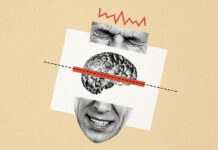Researchers from the Norwegian Institute of Public Health were asked by a health agency in Norway to conduct a review of the risks and benefits of long-term use of antipsychotics in people diagnosed with schizophrenia. The authors report little confidence in the existing research literature on this topic and conclude that it is not currently possible to establish causal relationships between antipsychotic (AP) use and mortality or AP use and work functioning. Generally, however, their review finds that people diagnosed with schizophrenia who did not take APs for more than two years were more likely to be working, and had better work performance and fewer positive and negative symptoms than those who took APs long-term.
“The question about effects and adverse effects of long-term treatment (longer than two years) with antipsychotics is difficult to answer, even with the best research methods,” the researchers write. “We, therefore, have very low confidence in the documentation.”
 While existing research on the effects on APs suggests that, at up to two years, patients see a decrease in positive symptoms, reduction in risk of relapse, increased quality of life, and results in fewer readmissions, other research has also outlined the numerous adverse effects on short- and long-term use of antipsychotics. Researchers from the Norwegian Institute of Public Health were tasked with examining the impact of long-term (more than two years) antipsychotic use for schizophrenia in hopes of providing further clarity in this area.
While existing research on the effects on APs suggests that, at up to two years, patients see a decrease in positive symptoms, reduction in risk of relapse, increased quality of life, and results in fewer readmissions, other research has also outlined the numerous adverse effects on short- and long-term use of antipsychotics. Researchers from the Norwegian Institute of Public Health were tasked with examining the impact of long-term (more than two years) antipsychotic use for schizophrenia in hopes of providing further clarity in this area.
A systematic review of studies assessing the effect of AP treatment longer than two years for psychotic disorders was conducted. In addition to collecting information about outcomes assessed (positive effects and adverse side effects; e.g., work functioning and mortality) researchers also ‘graded’ the studies to classify their quality and thereby the researchers’ confidence in the results. Few studies looked at treatment lasting over two years such that only eight studies from only three distinct patient samples (Finland, Sweden, United States) were included in this review.
The findings of this review revealed that in the Finnish and Swedish studies, patients who used APs had lower mortality. In the one study from the U.S patients who did not use APs were found to have better work functioning. The authors also highlight a finding that patients who were not on APs had fewer positive and negative symptoms in the long-term. Risk of re-hospitalization was mixed, leaving researchers uncertain of the effect.
The authors of this systematic review state that no RCTs have assessed the effects of APs in treatment longer than two years. They conclude that results of this review indicate weak support for establishing a causal relationship between APs and mortality, as well as their effects on work functioning. Currently, not enough information is known to confidently speak on the causal relationship of long-term use of APs and outcomes.
****
Smedslund G, Siqveland J, Kirkehei I, Steiro AK. Long-term antipsychotic treatment of persons with schizophrenia spectrum disorders: a systematic review, Norwegian Institute of Public Health. Research overview 2018. Available at www.fhi.no/en (Link)















In other words,:
“We psychiatrists have been pumping psych drugs into folks for decades, but we have done NO legitimate, long-term research to see if our mass-population, poly-drugging for life protocol actually has any real benefits or not. Of course this also allows us to ignore the ever-growing choir of voices claiming harm from our misguided drugs racket. But hey, look at all the MONEY and POWER we have! Ain’t life great!”
Report comment
“For the love of money is the root of all evil …,” Bradford. “The question about effects and adverse effects of long-term treatment (longer than two years) with antipsychotics is difficult to answer, even with the best research methods,” the researchers write. “We, therefore, have very low confidence in the documentation.” It’s probably more embarrassing, rather than “difficult to answer,” for good reason.
“The findings of this review revealed that in the Finnish and Swedish studies, patients who used APs had lower mortality.” All people die, so what does this mean? Does this actually mean those who used APs die at younger ages? Which is true of those force fed the antipsychotics. Claiming “patients who used APs had lower mortality” implies those who used APs live forever, which is untrue.
We are actually dealing with another, now American or world wide, psychiatric holocaust, just like the Nazi psychiatric holocaust and the Bolshevik Russian led psychiatric holocausts.
https://www.naturalnews.com/049860_psych_drugs_medical_holocaust_Big_Pharma.html
“The authors also highlight a finding that patients who were not on APs had fewer positive and negative symptoms in the long-term.” This is because the antipsychotics (aka neuroleptics) create the negative symptoms of schizophrenia, via neuroleptic induced deficit syndrome. And the antipsychotics also create the positive symptoms of schizophrenia, via antipsychotic induced anticholinergic toxidrome.
https://en.wikipedia.org/wiki/Neuroleptic-induced_deficit_syndrome
https://en.wikipedia.org/wiki/Toxidrome
In other words, “schizophrenia” is an illness created with the so called treatment. “Schizophrenia” is NOT a “genetic” illness, it is a doctor created/iatrogenic illness.
“Currently, not enough information is known to confidently speak on the causal relationship of long-term use of APs and outcomes.” No, there is enough medical information to prove that the antipsychotics create both the negative and positive symptoms of schizophrenia. I just gave it to you. But the “mental health professionals” choose to ignore and deny reality.
Report comment
It looks to me like tranquilizers, or brain suppressants, which is what these drugs really are, can sometimes take the edge off psychotic symptoms. Sometimes. A close look at the RCTs proves they one or two of them, at best, do a little. But its at a huge cost in terms of physical health and overall cognition and dependency. At best they will kick the can down the road, but I think they run the risk of turning a crisis into a permanent disability.
Their use is also accompanied by the unsubstantiated claim that the core problem is an imbalance causing psychosis causing low mood etc. I think it’s the other way around. Life events cause stress, internal conflict and low mood which spills over into psychosis. The difference between these 2 models is that one says , without evidence, that you are broken and all we can do is try and paper over the cracks, whilst the other says you have a psychological and situational challenge on your hands that you need help to overcome.
So the long term studies, such as they are, support this assessment. You may numb people up sufficient to keep them out of hospital, whilst effectively terminating their ability to make their way in the world and reducing their ability to think themselves through their issues. And over time the drugs will sadly derange you even if you try to stop.
The band aid will progessively cripple you – but mental health services have neglected other ways of helping with that stress.
Report comment
ugh. this is good…in the sense that important people with credentials are asking basic, important questions and MIA is kind enough to share it with us (thanks, btw). However…
the pills. drop them too fast, go truly crazy–crazy that only happens when psychiatry has been involved. stay on them, get fat and damaged all over–again, in a way that only psychiatry can really do.
ugh. at least important people are asking the basic, important questions. 🙂
Report comment
I was on antipsychotics for many years. I stopped taking them and there was no change to my thoughts which are relatively normal.
Being led to believe that oneself has a chronic mental illness when that is not so is most likely not an uncommon occurrence. This idea leads to personal disempowerment and rejection and abuse by other people.
Report comment
The authors used a study of death registers in Finland compared the cause-specific mortality in 66,881 patients versus the total population (5.2 million) between 1996 and 2006, suggesting that antipsychotic use decreased all-cause mortality compared to no antipsychotic use in patients with schizophrenia, and that clozapine had the most beneficial profile in this regard (Tiihonen et al., 2009).
A number of methodological and conceptual issues make the interpretation of these findings problematic, including incomplete reporting of data, questionable selection of drug groups and comparisons, important unmeasured risk factors, inadequate control for potentially confounding variables, exclusion of deaths occurring during hospitalization leading to exclusion of 64% of deaths on current antipsychotics from the analysis, and survivorship bias due to strong and systematic differences in illness duration across the treatment groups. Well designed, prospective mortality studies, with direct measurement of and adjustment for all known relevant risk factors for premature mortality, are needed to identify risk and protective medication and patient factors and to, ultimately, inform clinical practice.
Do antipsychotic medications reduce or increase mortality in schizophrenia? A critical appraisal of the FIN-11 study.
De Hert M1, Correll CU, Cohen D
https://www.ncbi.nlm.nih.gov/pubmed/20060684
Report comment
Thanks, Walter for informing me about the De Hert article!
Report comment
Antipsychotics dull ones senses. I’m sure sometimes they can be helpful. They can also make people become passive – and stiff, I might add. And some people start identifying as “mental patients” – that’s the term people used about themselves – myself included. It’s a horrific scene.
Report comment
Well, antipsychotics antagonize manganese, a necessary trace element to prevent tardive dyskinesia with its many tics and twitches that make life on “medications” difficult and embarrassing. This is also what makes them a sorry long-term treatment, as the likelihood of neurological problems increases with the length of exposure to “antipsychotics”.
Report comment
The review seems to consentrate on mortality. However register data in Finnland include information on readmission, disability allowance and if patients are in treament at the end of follow-up:
Tomi Bergströma, Jaakko Seikkula et al. 2018: The family-oriented open dialogue approach in the treatment of first-episode psychosis: Nineteen–year outcomes. Psychiatry Research Volume 270, December 2018, Pages 168-175 https://authors.elsevier.com/a/1XmgRbZg70VfA
The family-oriented open dialogue approach in the treatment of first-episode psychosis: Nineteen–year outcomes
Open Dialogue (OD) is a family-oriented early intervention approach which has demonstrated good outcomes in the treatment of first-episode psychosis (FEP).
The control group consisted of all Finnish FEP patients who had a follow-up of 19–20 years and who were guided to other Finnish specialized mental healthcare facilities (N = 1763). No difference between the samples was found regarding the annual incidence of FEP, the diagnosis, and suicide rates. Over the entire follow-up, the figures for durations of hospital treatment, disability allowances, and the need for neuroleptics remained significantly lower with OD group. Findings indicated that many positive outcomes of OD are sustained over a long time period. Due to the observational nature of the study, randomized trials are still needed to provide more information on effectiveness of approach.
The results indicated that with treatment commenced under OD as compared to controls, the overall need for hospital and neuroleptic treatment, and also the time spent on disability allowances, was significantly lower in a follow-up of approximately nineteen years. These findings are in line with earlier studies on OD (Seikkula et al., 2006; 2011), and also with another register-based study with 5-year follow-up, which included all Finnish first-onset schizophrenia patients between 1995 and 2003 (Kiviniemi, 2014). In that study the Western Lapland catchment area presented the lowest figures for the durations of hospital treatment and disability pensions when compared to other Finnish healthcare districts.
Open dialogue (OD) uses neurroleptics for 20% of patients at the beginning, standard treatment (CG control group) 70%.
At the end of use with the OD 36% of patients neuroleptics for CG, 81%
Disability allowance, re-admission and patients under treatment are halved with OD.
http://wkeim.bplaced.net/files/Bergstroma-2018.png
Report comment
The review does not discuss recovery.
A shift of paradigm to Open dialogue achieves quadruple recovery rate, reduces schizophrenia per year to one tenth and disability allowance/sickness is reduced to one third.
http://wkeim.bplaced.net/files/recovery-en.html
Open dialogue uses approx. 60% less neuroleptics (antipsychotics) for maintenance treatment compared to TAU (Svedberg et al. 2001: http://wkeim.bplaced.net/files/Open-Svedberg.gif ) and achieves more then 60% increase in recovery from approx 20% to more then 80%: http://wkeim.bplaced.net/files/Dialogical_practice_is_effektive.png
Recovery rates decreased: «17.7% in studies between 1941 and 1955, 16.9% in 1956–1975, 9.9% in 1976–1995, and 6.0% in studies after 1996 (P = .704; table1)» according to (Jaaskelainen et al. 2013).
Report comment